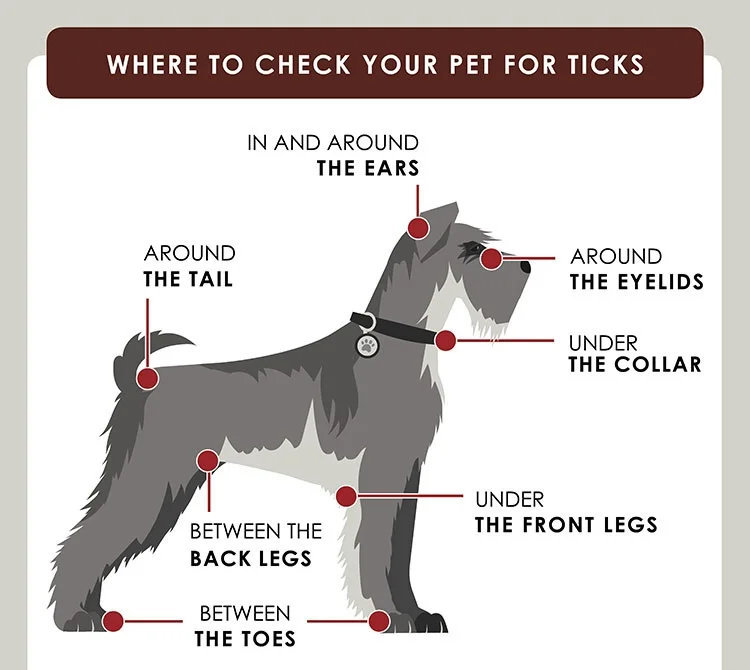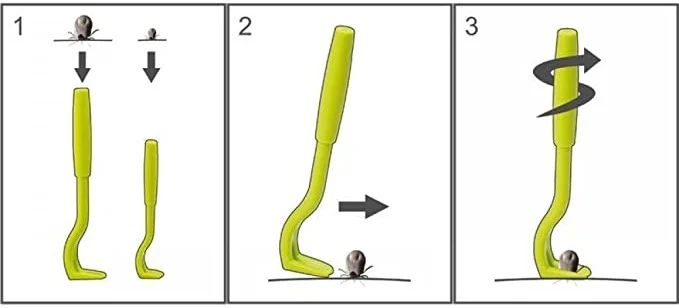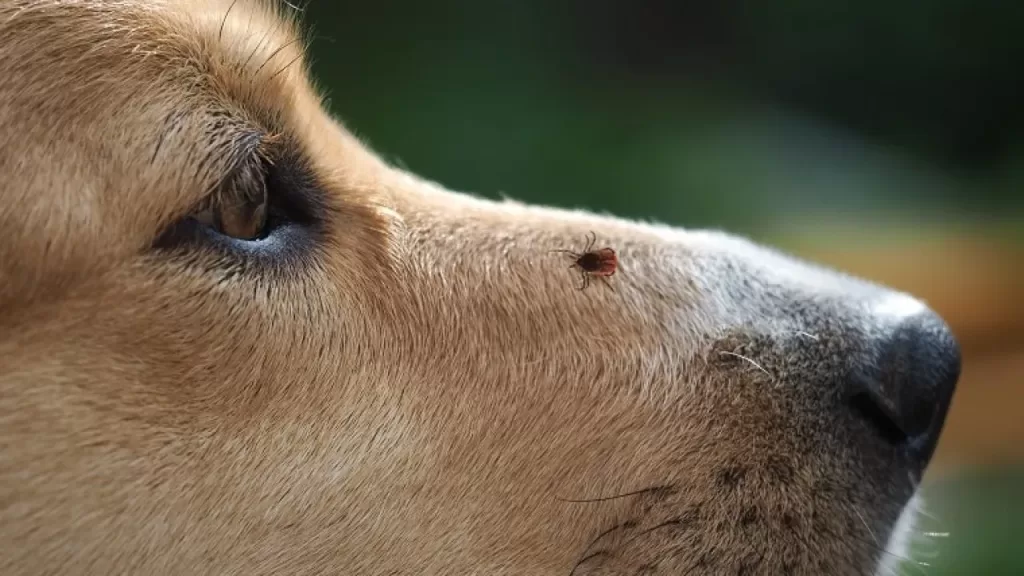How to Remove a Tick from Your Dog’s Body?
As a responsible pet owner, your dog’s health and safety must be a top priority. Tick infestation is a common issue that pet owners face, especially during warm weather. Ticks are not just an irritation but can also pose a severe risk to your dog’s health. Therefore, it is essential to learn how to identify and remove ticks from your dog’s body to prevent potential health complications. In this guide, we’ll provide a step-by-step approach to safely and effectively removing ticks from your dog.
Key Takeaways:
- Tick infestation can cause significant health issues for dogs, making it essential to identify and remove ticks promptly.
- Using fine-tipped tweezers and a calm environment for your dog is crucial for safe tick removal.
- After tick removal, properly cleaning the bite area and monitoring your dog can prevent infection and further illness.
- Preventing tick infestations through tick prevention products and tick-free environments can protect your dog’s health.
- It’s crucial to address myths and misconceptions concerning tick removal and seek expert advice for further concerns.
Table of Contents
Importance of Tick Removal for Your Dog’s Health
Tick infestations can pose a severe threat to your dog’s well-being. Fleas, just like ticks, can cause anemia, blood loss, and other related diseases in dogs.
When ticks feed on a dog, they can transmit various pathogens, including bacteria, viruses, and parasites. These pathogens can cause a myriad of diseases, which can lead to severe health complications in dogs.
The longer the ticks remain attached to your dog, the higher the risk of disease transmission and the more severe the health consequences can become. Therefore, removing ticks promptly is essential for ensuring your dog’s well-being and preventing these health complications from arising.
Understanding Ticks
Ticks are small arachnids that feed on the blood of animals and humans. They are commonly found in wooded areas, tall grasses, and bushes. Understanding ticks’ life cycle, types, and associated health risks can help pet owners identify and remove them promptly, minimizing potential health issues.
Tick Life Cycle:
| Stage: | Description: |
|---|---|
| Egg: | The tick life cycle begins with the female laying up to 3,000 eggs at a time. |
| Larva: | The egg hatches into a larva, which has six legs. The larva will feed on the blood of a host, then drop off to molt into the next stage. |
| Nymph: | The nymph has eight legs and will find another host to feed on before dropping off to molt into the adult stage. |
| Adult: | The adult has eight legs and will continue to feed on a host, usually for several days, until it drops off to lay eggs and complete the life cycle again. |
Tick Types:
Several species of ticks commonly affect dogs, including the American dog tick, black-legged tick, and brown dog tick. It is essential to recognize the species that commonly occur in your area and understand their life cycle to prevent possible infestations.
Health Risks:
Ticks can transmit a wide range of diseases to both dogs and humans through their bites. Some of the most common tick-borne diseases in dogs include Lyme disease, Rocky Mountain spotted fever, and anaplasmosis. These diseases can cause symptoms such as fever, joint pain, lethargy, and even death in severe cases.
Therefore, it is crucial to check for ticks on your pet regularly and remove them promptly to minimize potential health risks.
Also Read: Bathing Your Dog: Do dogs feel better after a bath?
Identifying Ticks on Your Dog
Identifying ticks on your dog early on is crucial to prevent tick infestations and avoid potential health risks. Here are some signs to look out for:
- Visible ticks: Check your dog’s entire body and underbelly, especially around the ears and head, where ticks are most commonly found. Ticks may appear as small, dark, or reddish-brown bumps on the skin.
- Unusual scratching: If your dog is continuously scratching or biting at a particular area, it may indicate a tick bite or infestation.
- Redness and inflammation: Ticks can cause redness, swelling, or inflammation around the bite area.
- Loss of appetite: In severe cases of tick-borne diseases, dogs may experience a loss of appetite, lethargy, or fever.
Early detection of tick bites is crucial to prevent the spread of tick-borne diseases. Regularly check your dog’s skin and fur for ticks and seek veterinary care if you notice any signs of a tick infestation or illness.
What are the risks associated with ticks?
Unfortunately, ticks can spread some terrible diseases.
You should check with local authorities or a local vet to find out if there are any tick-borne diseases in your area.
Lyme disease is one such risk. This is a bacterial infection that can seriously harm your dog.
They may be lazy, lame, feverish, or lose their appetite. If your pet gets Lyme disease, the vet may need to prescribe antibiotics to get them back.
Babesiosis is another threat. It is very rare in the UK but has been found in dogs heading south and more recently.
It is deadly to dogs. If your dog has pale or yellow gums, decreased appetite, or fever, a few days after the tick, they may have babesiosis.
So yes, ticks can have serious consequences when they pair themselves with your dog. Be vigilant and spend your time removing them and hope your pet is well.
How to spot ticks on your dog?
Ticks are usually taken from natural areas where there is plenty of wildlife.
They can climb on your dog when you take them for a walk in the park or even in their own garden.

They are most common in forests and grasslands. When you return from such an area, you should check your dog for ticks.
Or, if you notice your dog chewing or biting at their feet, look closely.
Start at the bottom of their feet and work each leg up systematically. Then start again from the nose and work backward along the body.
Ticks are round and brown or gray. You can use a hair dryer to push your dog’s hair aside while you search.
When you find a tick, you should remove it but do not pull it out, as the head may break and remain inside, causing a secondary infection.
How to Remove a Tick?
When a tick decides to feed, it attaches to your dog’s skin. The easiest way to remove it is with a tick twister.
It’s like a small fork, inserted under the body of a tick, against your dog’s skin, and just twisted and pulled.
This will prevent the tick’s head from breaking when you remove it. If you walk your dog in areas where there are a lot of ticks, being close to the tick twister can be very helpful.
If you do not have a tick twister, you can also use tweezers.
Be careful not to squeeze the body of the tick when you use tweezers, as it can kill the infected blood and turn the saliva into your dog’s blood.
Instead, as close as possible to your dog’s skin, grab the tick under the body and pull it straight out.
Necessary Tools and Precautions for Safe Removal
Tick removal requires some essential tools to ensure safe and effective extraction. Before starting, gather the necessary tools and precautions:
- Fine-tipped tweezers: The fine tips help grasp the tick’s mouthpart as close to the dog’s skin as possible.
- Gloves: Wear gloves to avoid contact with the tick and prevent possible infection.
- Disinfectant: Have disinfectant on hand to clean the bite area post-removal.
- Petroleum jelly: Applying petroleum jelly before tick removal can suffocate the tick and make extraction easier.

In addition to using the proper tools, take the following precautions before starting the removal process:
- Restrain your dog: Ensure your dog is safely restrained to avoid sudden movements or bites during tick removal.
- Choose a calm environment: Pick a quiet and calm environment to ease your pet’s stress during the procedure.
- Wear protective gear: Wear protective clothing and cover exposed skin to reduce the risk of tick bites.
Additional Tips for Safe and Effective Removal
When we think of How to Remove a Tick from your dog’s skin, the following tips can help:
- Use steady, gentle pressure: Avoid quick or jerky movements, as this can cause the tick’s mouthpart to break and become embedded in the skin.
- Do not twist or crush the tick: Use a slow, steady pulling motion to extract the tick.
- Do not use heat or chemicals: Avoid using substances such as alcohol, petroleum jelly, or heat, as these methods can irritate the tick and cause it to release more saliva, increasing the risk of infection.
- Monitor your dog: Check the bite area for any signs of infection, such as swelling, redness, or discharge. Seek veterinary care if necessary.
Step-by-Step Guide on Tick Removal
How to Remove a Tick ? Removing a tick from your dog requires precision and patience. Follow this step-by-step guide to safely extract the tick and minimize the risk of infection:
- Restrain your dog: Before beginning the removal process, make sure your dog is properly restrained to prevent any sudden movements. Use a leash or have someone hold them securely.
- Gather necessary tools: You will need fine-tipped tweezers to grip the mouthparts of the tick and gently remove it from your dog’s skin. Avoid using your fingers, as this can increase the risk of infection. It may also be helpful to have gloves and rubbing alcohol on hand for extra precautionary measures.
- Position tweezers: Position the fine-tipped tweezers as close to the skin as possible and grip the tick’s mouthparts firmly.
- Extract the tick: Gently and steadily pull the tick straight out, without twisting or crushing it.
- Dispose of the tickDispose of the tick by placing it in a container with rubbing alcohol or flushing it down the toilet. Do not crush it with your fingers, as this can increase the risk of infection.
- Disinfect the bite area: After removing the tick, disinfect the bite area with rubbing alcohol or an antiseptic solution.
Remember to monitor your dog for any signs of infection or illness and seek veterinary care if necessary.
Aftercare and Monitoring
After removing the tick, it’s vital to clean the bite area with warm water and soap or a disinfectant. This helps in preventing any infections and irritations. Additionally, apply antiseptic to the bite area to keep it clean and free from any bacterial infections.
It’s also crucial to monitor your dog for any signs of infection or illness. Watch out for symptoms such as fever, lethargy, and loss of appetite. If you notice any of these symptoms, seek veterinary care immediately.
Monitoring Your Dog’s Health After Tick Removal
| Symptoms of Infection | What to Do |
|---|---|
| Fever | Seek veterinary care immediately |
| Lethargy | Monitor your dog’s activity and seek vet care if symptoms persist |
| Loss of Appetite | Monitor eating habits and seek vet care if symptoms persist |
Remember to keep monitoring your dog for any unusual behaviors and attend regular veterinary checkups. Aftercare and monitoring play significant roles in your dog’s health and well-being.
Preventive Measures
Tick prevention is key to keeping your dog healthy and happy. Here are some preventive measures you can take to reduce the risk of tick infestations:
1. Tick Prevention Products
Using tick prevention products such as collars, sprays, and spot-on treatments can help protect your dog from ticks. Consult with your veterinarian to determine the safest and most effective products for your dog’s needs.
2. Regular Grooming
Regular grooming can help detect ticks on your dog’s body and prevent them from attaching. Use a fine-toothed comb to carefully groom through your dog’s fur, paying special attention to their ears, armpits, groin, and tail.
3. Tick-Free Environment
You can create a tick-free environment for your dog by keeping your lawn trimmed and maintaining a clean yard free from debris. Also, avoid taking your dog to tick-infested areas such as wooded trails or tall grass.
4. Check for Ticks Daily
Performing a daily tick check is an essential preventive measure. Use your hands to feel for any bumps or irregularities on your dog’s skin and visually inspect any areas that seem suspicious.
By using these preventive measures and taking precautions against tick bites, you can ensure a healthy and tick-free life for your dog.
Addressing Concerns and Additional Tips
Despite the importance of tick removal, there are several concerns and misconceptions that pet owners may have. Here are some of the most common concerns, along with additional tips and advice:
Myths and Misconceptions
One common myth is that twisting the tick during removal is necessary. However, this can actually cause the tick’s mouthparts to break off and remain in the skin, leading to infection. Another misconception is that the head of the tick must be removed separately. In reality, the head will usually detach on its own and can be left to heal naturally.
Concerns Related to Tick Removal
Some pet owners may be concerned about the potential pain or discomfort their dog may experience during tick removal. Rest assured that when done properly, tick removal should be painless for your dog. Additionally, if you have any concerns about the removal process, consult with your veterinarian.
Additional Tips
Prevention is key when it comes to protecting your dog from ticks. In addition to using tick prevention products, keep your yard and surrounding areas regularly trimmed and free of debris. Additionally, check your dog for ticks after outdoor activities and brush their coat regularly to remove any hitchhiking ticks. And of course, if you notice any signs of illness or infection after tick removal, seek veterinary care immediately.
Expert Tip: “When it comes to tick removal, don’t panic. Stay calm and patient, and follow the proper procedure step-by-step. Your dog will thank you!” – Dr. Jane Smith, DVM
What is the wrong way to deal with ticks on a dog’s feet?
It is important to go about things the right way. If you make a mistake while removing the tick from your dog, it will increase the chance of spreading the disease into your dog’s blood.
Do not use your hands to do this and do not try to burn or poison the tick when it is attached to your dog. Do not crush the tick, as this will also increase the spread of infection.
You may also hear about home remedies for tick removal by placing petroleum jelly. It suffocates the tick, causing them to de-latch.
But not only is it particularly effective, but the longer a tick stays on your dog the greater the chances of contracting the disease.
Be sure to carefully dispose of the removed tick, preferably by jumping into the toilet. If you put it in the trash, it can crawl back into your house, and attach again if you don’t kill it.
When should I talk to Vet?
Fortunately, ticks are not as prevalent in the USA as in other parts of the world, so this means that tick-burn diseases are also less common.
As a result, the main reason you should take your dog to the vet is to treat a local bacterial infection around the bite.
It looks red and swollen, and the pus can also dissolve. Antibiotics are needed to clear local bite infections.
Conclusion
In conclusion, removing ticks from your dog is a crucial aspect of maintaining their health. Remember to conduct regular tick checks, especially during the warmer months, and promptly remove any ticks you find. By following the step-by-step guide provided in this article and taking necessary preventive measures, you can protect your furry friend from tick-borne diseases.
Some key points to keep in mind include:
- Understanding the importance of tick removal for your dog’s health
- Knowing how to identify ticks on your dog and using necessary tools for safe removal
- Practicing aftercare and monitoring your dog for any signs of infection or illness
- Implementing various preventive measures such as tick prevention products and creating a tick-free environment for your dog
Regular tick checks and proactive measures are crucial for protecting your dog from tick-borne diseases. By following the tips and guidelines provided in this article, you can keep your furry friend happy and healthy for years to come.
FAQs on dealing with ticks on your Dog’s Body
What is the best way to remove a tick from my dog’s body?
The best way to remove a tick from your dog’s body is with tweezers. Carefully grab the tick as close to the skin as possible, and gently pull it out. Do not twist or jerk the tick, as this can cause the mouth parts to remain in the skin.
What should I do with the tick once it’s been removed?
After removing the tick, clean the area with an antiseptic or soap and water. The tick should then be put into a sealed container, or flushed down the toilet.
Is there any risk of my dog contracting a disease from a tick?
Yes, ticks can transmit several serious diseases to humans and dogs, such as Lyme Disease, Ehrlichiosis and Rocky Mountain Spotted Fever. If you’ve removed a tick from your dog, it’s important to monitor for any signs of illness.
How can I prevent my dog from getting ticks?
There are several ways to help prevent ticks from attaching to your dog. These include: using a tick-repellent collar, keeping your yard free of tall grass, and regularly checking your dog’s fur and skin.

